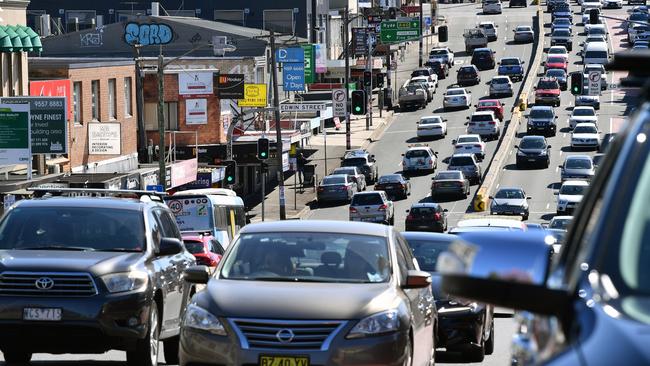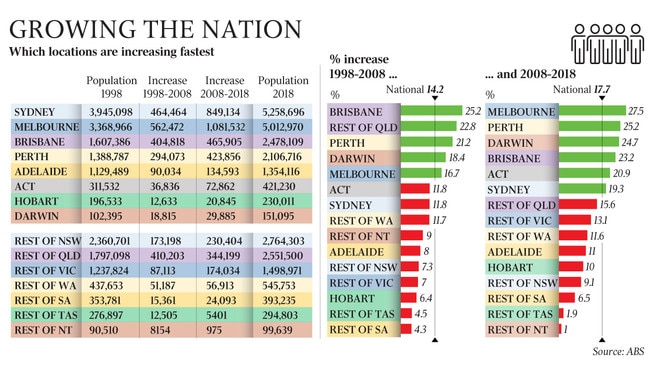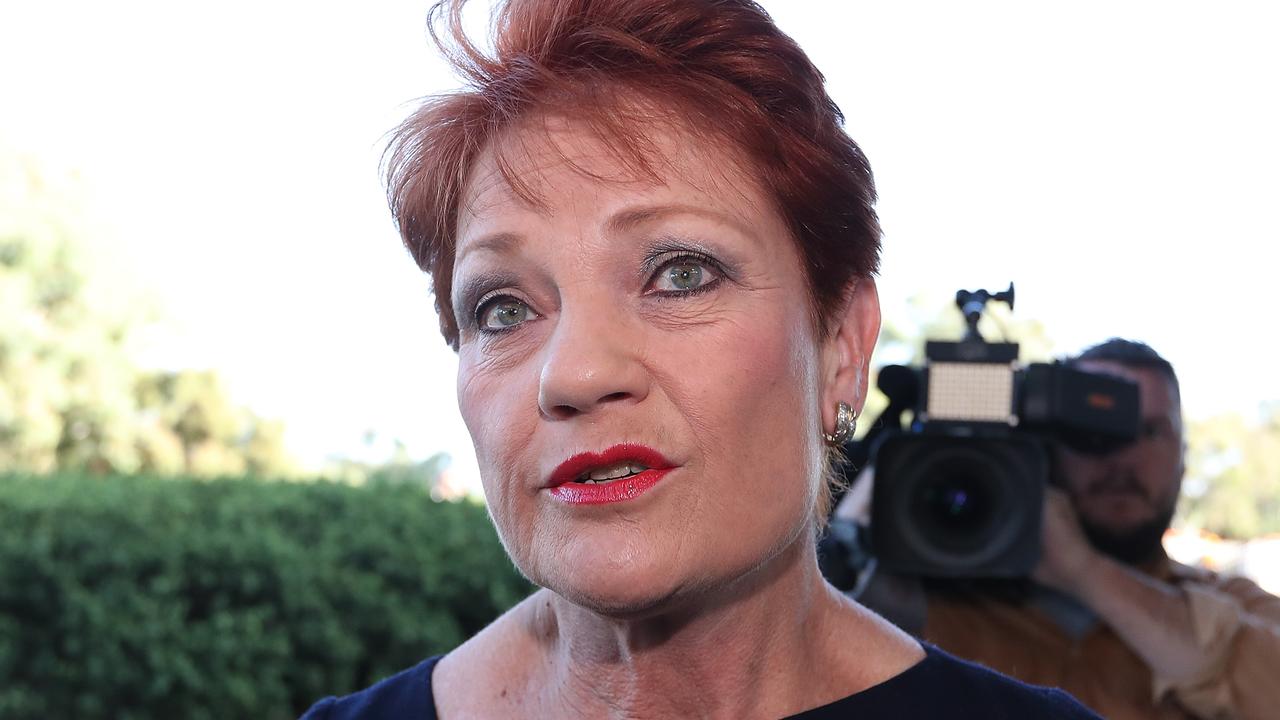‘Surging Sydney’ falling behind rival cities in population growth
Sydney has done less than its share when its population growth since the 1970s is compared with the national average.

The epicentre of the immigration debate, Sydney, has done less than its share when its population growth since the 1970s is compared with the national average, while other capitals such as Melbourne, Perth and Brisbane have done far more.
An analysis of population change in the past 50 years, using census data, shows that while the nation doubled its population from 12.5 million in 1970 to 25 million this year, Sydney grew by 91 per cent and the rest of NSW by just 56 per cent. In the same five-decade stretch, Melbourne grew by 104 per cent, Brisbane almost tripled in size and Perth more than tripled.
Australian National University demographer Liz Allen said the narrative that some cities had experienced “out-of-control population growth” was not true. “We have not invested in infrastructure that is even adequate for zero growth,” she said. “These cities are not growing out of control — the problem is that funding and policies are not keeping up.”

Population and Urban Infrastructure Minister Alan Tudge yesterday flagged a plan to force new migrants to settle for five years in regional areas and cities outside Melbourne, Sydney and southeast Queensland. “We’ve got serious congestion problems in our big cities,” he said.
Migration has long been blamed for congestion in Sydney, yet it is only since 2008 that the city’s population growth rate has exceeded that of the nation, growing by 19.3 per cent compared with the national rate of 17.7 per cent. Sydney grew by 464,464 people between 1998 and 2008, but added a further 849,134 in the subsequent 10 years.
The trend towards population growth being focused in cities over the past 10 years is highlighted by ABS data, which shows five capital cities and the ACT grew by more than the national average, while Adelaide, Hobart and the non-capital city areas of all states grew at a slower rate.
Melbourne’s population increased by more than a quarter in the past decade, as almost 1.1 million more people called the city home, while Perth grew by more than 25 per cent and Darwin by 24.7 per cent. In the decade to 2008 and the decade to 2018, Sydney’s percentage growth was almost identical to that of the ACT.
Dr Allen said Sydney’s growth rate began to pick up from 2004, which coincided with the NSW Labor government of Bob Carr.
“If we look particularly at Bob Carr’s era, he was very, very vocal and was not a fan of immigrants coming to Sydney and in so doing he did not build a city for the future,” she said. “It became a self-fulfilling prophecy.”
The nation’s permanent migration intake fell from about 184,000 to 162,000 in the past year and Mr Tudge would not rule out a further reduction when pressed on the issue yesterday.


